Hannah Byron's Blog, page 17
December 22, 2020
Why I chose for Historical Fiction

Changing from contemporary fiction to historical fiction didn’t happen to me overnight and wasn’t a simple flip of the switch. It was the result of a long & conscious deliberation with myself.
And I must admit I still, occasionally, have my doubts about HF. All the research, the essential tropes, the critical eyes from readers. The writing is so much slower and has to be so precise and time conscious. But despite it all, I stand by my choice and take the extra work in my stride. So far.
I firmly believe in the power of the past to tackle the challenges of the future. And if I – as a fiction author – could contribute to only one inch of growth in awareness by shedding some light on the lessons of the past, my mission is accomplished.
Every new century is obsessed with looking forwards instead of backwards. It’s the same thought cycle that happens in other time frames as well. Think of taking stock of the past year in December and new year’s resolutions in January. Our thoughts in the morning are different to those in the evening, our hopes for the day and what we actually accomplished. Just saying: beginnings and endings are different.
So it’s no surprise for me that at the beginning of the 21st century we’re much more inclined to worry about major topics such as climate change and geopolitical shifts that are taking place right now and what they (may) mean for the future. Tackling Covid is also part of that future package.
Yet it’s a no-brainer that all today’s problems have their origin in the past and if we want to solve them truly and for good, we’d better go back to their roots. I might find myself swimming upstream here, against the current, but hey think of me as just waving a hand above water, as a sign to remember.

One of the definitions – I’m sure there are plenty- is:
Historical fiction transports readers to another time and place, either real or imagined. Writing historical fiction requires a balance of research and creativity, and while it often includes real people and events, the genre offers a fiction writer many opportunities to tell a wholly unique story.

The young author and her big sister 1960
The line that has been drawn to make a book fall within the HF category is that it should take place at least 50 years in the past. So it is an evolving genre with the demarcation line now being drawn at the end of the 1960s.
I’ve chosen the era from 1850 to 1960 as my focal point, too vast a period for many other HF authors I assume but I find that the most interesting part of our history: the evolution from a man-made to a machine-made world.
So you won’t find me in a clay hut in the Middle Ages or taking notes at a decadent orgy in Ancient Rome. I prefer the times when life had become a little bit more complex and women could collectively put their shoulders to the wheel. I go for themes like liberation, the pursuit of happiness, growth in awareness. The Four freedoms articulated by Franklin D. Roosevelt in 1941 resonate with me: Freedom of speech, Freedom of worship, Freedom from want, Freedom from fear.

Merry Christmas y’all!
Hannah
December 21, 2020
Why I chose for Historical Fiction
Changing from contemporary fiction to historical fiction didn’t happen to me overnight and wasn’t a simple flip of the switch. It was the result of a long & conscious deliberation with myself.
And I must admit I still, occasionally, have my doubts about HF. All the research, the essential tropes, the critical eyes from readers. The writing is so much slower and has to be so precise and time conscious. But despite it all, I stand by my choice and take the extra work in my stride. So far.
I firmly believe in the power of the past to tackle the challenges of the future. And if I – as a fiction author – could contribute to only one inch of growth in awareness by shedding some light on the lessons of the past, my mission is accomplished.
Every new century is obsessed with looking forwards instead of backwards. It’s the same thought cycle that happens in other time frames as well. Think of taking stock of the past year in December and new year’s resolutions in January. Our thoughts in the morning are different to those in the evening, our hopes for the day and what we actually accomplished. Just saying: beginnings and endings are different.
So it’s no surprise for me that at the beginning of the 21st century we’re much more inclined to worry about major topics such as climate change and geopolitical shifts that are taking place right now and what they (may) mean for the future. Tackling Covid is also part of that future package.
Yet it’s a no-brainer that all today’s problems have their origin in the past and if we want to solve them truly and for good, we’d better go back to their roots. I might find myself swimming upstream here, against the current, but hey think of me as just waving a hand above water, as a sign to remember.

What Historical Fiction is to me
One of the definitions – I’m sure there are plenty- is:
Historical fiction transports readers to another time and place, either real or imagined. Writing historical fiction requires a balance of research and creativity, and while it often includes real people and events, the genre offers a fiction writer many opportunities to tell a wholly unique story.

The line that has been drawn to make a book fall within the HF category is that it should take place at least 50 years in the past. So it is an evolving genre with the demarcation line now being drawn at the end of the 1960s.
I’ve chosen the era from 1850 to 1960 as my focal point, too vast a period for many other HF authors I assume but I find that the most interesting part of our history: the evolution from a man-made to a machine-made world.
So you won’t find me in a clay hut in the Middle Ages or taking notes at a decadent orgy in Ancient Rome. I prefer the times when life had become a little bit more complex and women could collectively put their shoulders to the wheel. I go for themes like liberation, the pursuit of happiness, growth in awareness. The Four freedoms articulated by Franklin D. Roosevelt in 1941 resonate with me: Freedom of speech, Freedom of worship, Freedom from want, Freedom from fear.

Merry Christmas y’all!
Hannah
December 10, 2020
My very first fan Elisa Hordon interviews me
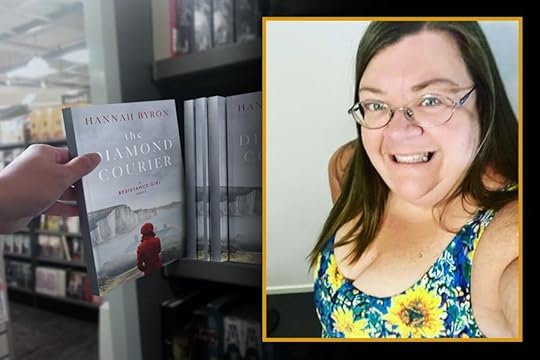
As authors we wouldn’t exist without readers. It’s as simple as that. So when I embarked on my historical fiction rebrand, I vowed to myself that I’d personally get to know my die-hard fans from the beginning and keep them in my orbit. Fans like Elisa Hordon are the making of Hannah Byron. I mean how can you resist a reader who compares your writing style to that of Barbra Taylor Bradford and Judith Krantz?
On the happy day of the release of my second book in The Resistance girl Series, Elisa interviews me. Let me give the floor to my friend from down-under.
My name is Elisa Hordon, I live in sunny Queensland, Australia and I am an avid book reader and reviewer. Today I’m interviewing the amazing Hannah Byron on the release of her latest novel The Diamond Courier. This was a must-read book for me after already falling in love with Hannah’s writing after I read the prequel, In Picardy’s Fields.

So, Hannah when did you first know you wanted to be a writer?
When I held my first pen at the age of 4, Elisa. Tongue out of my mouth, I produced the same letter over and over until I mastered first the letters, then the words and finally the sentences. I never stopped writing and wrote my first stories at age 8 inspired by Enid Blyton’s The Famous Five. I had two sets of twins and multiple dogs. Loved imagining big from an early age. Alas, no proof of any of that early toil today but here’s a picture of me at age 4 with my big sister. You can already see the heavy responsibility of storyteller resting of the shoulders of the young author.

The young author and her big sister 1960
What made you decide to pick this time in history to set your amazing novels?
Ah, good question! I wanted to try my skills as an HF author with a backdrop that was intense and broad, a time that forced humanity on its knees, not once but twice. Hence the First and Second World Wars. I also wanted to set my novels in a time of budding feminism, a time when women started liberating themselves from apron strings and childbeds. Hence the 20th century.
Have you personally traveled to all of the places you mention in your stories?
So far yes. I was born in Paris so many of many heroines have a connection with the City of Light. I did research in Picardy in the summer of 2019. My mum grew up in Kent, England, so I travelled extensively in the UK but only crossed through Switzerland on my way to Italy. Belgium is on my doorstep as I currently live in the south of Holland close to the border. Book 4 is going to be trickier for me as it is situated in Austria and Norway, both countries that I haven’t visited. With Covid it’s going to be difficult to do research on the spot.

My mum and me on our way to Dover 2007
How do you go about researching for your books?
I tend to read some books on the subject and for the rest I research Google when I come across something I need to check. For The Diamond Courier I was in touch with the Belgium researcher Eric Laureys who extensively documented the Antwerp diamond industry before, during and after WW2. He’s currently reading my book so I await his ‘verdict’ with bated breath.
Do you have any personal family stories from the time in history you’ve set your books?
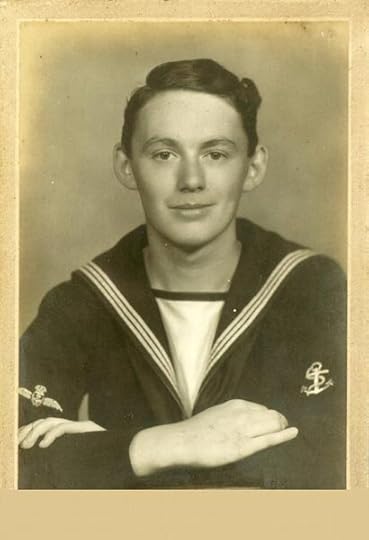
Yes, my Great-Uncle Jack Westcott died in the trenches in Picardy in 1916 (see my other blogs on this). And my mother’s eldest brother David Malcolm Ferguson died on 15 March 1941 and is MIA. He was a pilot in the Fleet Air on the H.M.S. Ark Royal.
What did you do for work before becoming a writer?
I’m not a fulltime writer yet. I work part-time as a Dutch-English translator for a Dutch university and before that I was an English lecturer at that same institute. I’ve also been a journalist and a mum for many years but translating has been my daily work for over 30 years now.
What is your favourite colour?
Green. In all its shades from mint to dark-green and khaki.
Do you have a favorite holiday place?
I’m eclectic in that respect. I love the sea, mountains, cities. Don’t get me started. I miss travelling so much, like everybody else. But I think my happiest hols were on a small island in the Baltic sea called Öland.

Scanning Södra Öland with youngest son and guide – 2004
How long does it take to write one of your books?
The Resistance Girl Series are long books at 120-130K so it takes me about three months. After this series I want to write shorter books as I’d like to publish more and faster.
How many books have you written?
In total I’ve written 11 books now, of which 9 have been published. Two as Hannah Byron. Book 3 and 4 in the series are planned for March and June 2021.
What was your very first book you finished writing?
The first full-length book I wrote back in 1992 was typed in Word Perfect and called ‘The Goose Eater’. Still have a print copy somewhere but it will never see the light of day. Too cringeworthy.
What would you say is your main writing quirk?
I need coffee to write. That’s about as crazy as it gets. LOL.
What would be the one piece of advice you’d pass onto anyone wanting to become a writer?
Keep going, find your own voice, believe in yourself, don’t give up before you’ve written 1000000K words, stay in touch with other writers.
What is your favourite childhood memory?
Gosh, that will have to be the annual Christmas pudding event. From the moment the basins started clattering for hours in boiling water in October, to the rinsing of the six pence by my mother the week before Christmas, to the absolute highlight of the pudding set alight with brandy and then being cut, after which the deliciously smelling, steamy pudding with a dollop of thick custard landed on my plate. And then hoping against hope I would be the one to find that shiny object so the next year would be my lucky one. I don’t actually recall ever winning it. Hence a bleak childhood – I suppose – but the suspense and the taste of the pudding is still with me today. I think it’s my forever favourite food in the world.

Thank you so much Elisa for this interview. I hope you enjoyed reading a little more about my writing life and interests.
My very first fan Elisa Hordon interviews me
As authors we wouldn’t exist without readers. It’s as simple as that. So when I embarked on my historical fiction rebrand, I vowed to myself that I’d personally get to know my die-hard fans from the beginning and keep them in my orbit. Fans like Elisa Hordon are the making of Hannah Byron. I mean how can you resist a reader who compares your writing style to that of Barbra Taylor Bradford and Judith Krantz?
On the happy day of the release of my second book in The Resistance girl Series, Elisa interviews me. Let me give the floor to my friend from down-under.
My name is Elisa Hordon, I live in sunny Queensland, Australia and I am an avid book reader and reviewer. Today I’m interviewing the amazing Hannah Byron on the release of her latest novel The Diamond Courier. This was a must-read book for me after already falling in love with Hannah’s writing after I read the prequel, In Picardy’s Fields.

Cover of The Diamond Courier
So, Hannah when did you first know you wanted to be a writer?
When I held my first pen at the age of 4, Elisa. Tongue out of my mouth, I produced the same letter over and over until I mastered first the letters, then the words and finally the sentences. I never stopped writing and wrote my first stories at age 8 inspired by Enid Blyton’s The Famous Five. I had two sets of twins and multiple dogs. Loved imagining big from an early age. Alas, no proof of any of that early toil today but here’s a picture of me at age 4 with my big sister. You can already see the heavy responsibility of storyteller resting of the shoulders of the young author. 
December 3, 2020
What is NaNoWriMo and why does it work for me?
 What is NaNoWriMo and why does it work for me?
What is NaNoWriMo and why does it work for me?Since 2011 I’ve been a member of NaNoWriMo, which stands for National Novel Writing Month. In the course of these 9 years I’ve participated 6 times and won it 4 times. Winning means writing 50,000 words in the 30 days of November aka 1,667 words per day. For some writers this is a piece of cake, for others – like me – quite a tough benchmark.
In this blogpost I want to share some info on what NaNoWriMo is and why it works for me. See the pretty purple collar on my profile pic? That’s for being a 4-time winner.

NaNoWriMo History
NaNoWriMo was accidentally founded by Chris Baty in July 1999. Twenty other people participated that year, all from the San Francisco Bay Area. The project began not because Baty and his friends had ideas for the great American novel but because they ‘wanted to write novels for the same dumb reasons twentysomethings start bands’. After grabbing the shortest novel on his shelf (which happened to be Aldous Huxley's Brave New World) and doing a rough word count, the number that Wrimos today strive for was set in stone. Six of the twenty-one participants, including Baty, completed the challenge. After 1999, NaNoWriMo was moved from July to November to take advantage of the miserable weather.
2000 was the first year NaNoWriMo had a website, aYahoo!group and rules were set up. That year Baty verified the winning novels himself by running a word counter on each novel. The event had 140 participants and 29 winners.

In 2001, the event became much more popular when 5,000 participants showed up. Like the year before, Baty (with the help of some friends) entered each participant manually into the system and invited them to a Yahoo! group but eventually had to put a deadline on signing up because of the volume of participants. When it was announced that official validation would be canceled that year due to the number of winners, participants validated each other’s novels. In the end, over 700 participants were validated.
By 2020 the event has grown from 21 friends to more than 300,000 writers in 90 countries. Chris still serves as a Board Member Emeritus for NaNoWriMo.
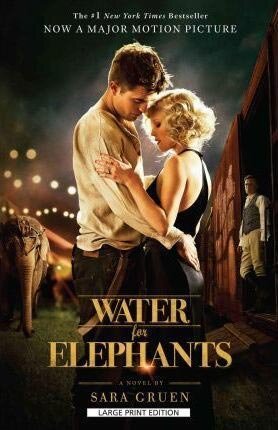
November as the novel writing month has been a tradition for years now, especially in the Indie world. One famous book that I know of that resulted from NaNo was ‘Water for Elephants’ by Sara Gruen. But there are/were certainly more bestsellers written within the framework!
How it works
You create a profile on the website, where you share some personal info and info on your writing project. Tracking opens on 1 November and closes on 30 November. You upload your word count every day. If you want, you can write more than 50K words. By uploading your word count you and your buddies can follow your progress. It also provides some statistics about your performance. Cheating is possible, of course, but there’s no fun in that.
The site also has a shop and you can give donations for their causes.
Why NanoWriMo works for me?When I started my career as a published author in 2011/12, I still had that romantic idea that one wrote when one feels like it, which certainly wasn’t every day and perhaps not for months on end. So the first time I participated in NaNo in 2012 – I enrolled in 2011 but was too afraid to try it – it was a tough call to suddenly pump out so many words every day but it was also exhilarating. As you have buddies that cheer you on, there is a kind of accountability which helps you to keep going.
During my early years I mainly wrote in November and produced very little in the rest of the year. There were personal, tragical reasons that kept me from the page as well, but I believe I wasn’t ready for understanding that formula of 10% inspiration and 90% perspiration.
A decade ago, it was only a small group of dedicated Indies who understood that hitting your daily word count and rapid release were important factors in becoming a successful author. Those who embraced that discipline from the start have generally had a greater chance at breaking through because they now have an impressive backlist and published their series before the great surge began. Writers like me, bringing out one book a year, fared much less. I had to change my mindset.
So Nano is and will remain a favourite project for me although I write all year round now. There is a special romance in uploading your word count every day on the site and see it grow. Tracking that progress is part of the fun and the bonus of winning the badge and certificate at the end makes it extra special.
Whether all these rapidly typed words have any merit remains to be seen in the editing process, but I have a good feeling about them!
Do take part in 2021 and find me there to become my buddy: https://nanowrimo.org/participants/hannahferguson

What is NaNoWriMo and why does it work for me?
Since 2011 I’ve been a member of NaNoWriMo, which stands for National Novel Writing Month. In the course of these 9 years I’ve participated 6 times and won it 4 times. Winning means writing 50,000 words in the 30 days of November aka 1,667 words per day. For some writers this is a piece of cake, for others – like me – quite a tough benchmark.
In this blogpost I want to share some info on what NaNoWriMo is and why it works for me. See the pretty purple collar on my profile pic? That’s for being a 4-time winner. 
November 25, 2020
The Diamond Courier is coming on 10 December!
 I’m so excited now we’re heading fast towards 10 December when my second book in The Resistance Girl Series comes out. Time for The Diamond Courier. It’s on preorder now!
I’m so excited now we’re heading fast towards 10 December when my second book in The Resistance Girl Series comes out. Time for The Diamond Courier. It’s on preorder now!
The Diamond Courier was the book I initially started to write as my come-back book after the 2020 rebrand. For my first historical fiction series I wanted to concentrate on World War II as I – slightly tongue-in-cheek – always claim to be an indirect result of D-Day myself. Which is true. My uncle Tom Naylor, at the time engaged to my Mom’s eldest sister Beryl, landed of the beaches of Normandy in June 1944 and fought his way through France and Belgium for the liberation of the south of Holland.
There he befriended a local doctor, Dr Volmer, with whom he stayed in touch after the war. My Mom meanwhile, being bored during her long summer holidays from Manchester University in 1949, decided to take her bike across the Channel at Dover and peddle up from Ostend to meet this doctor. Ah well, the good man was very busy and had no time to give her a tour of the sights and very few locals spoke English at the time, so they rounded up the only intellectual available in the wide vicinity of this rural area. And that man eventually ended up being my father.

Helen and Hans aka Mom and Dad

Baby Hannah
Back to ‘The Diamond Courier’, the sequel to the WW1 novel ‘In Picardy’s Fields’. This is the first of a 3-book series about strong women fighting the Nazis on their own terms. In this book we meet Lili Hamilton, the daughter of feisty Countess Madeleine de Dragoncourt and level-headed Major Gerald Hamilton from In Picardy’s Fields.

Idea for Le Manoir
Now Lili is quite a character herself and this is what early readers say about her:
“I have just this second read the last sentence of The Diamond Courier. I am speechless. And very tired. I spent most of the night reading until the words started to blur around 3:00 am. You were right in saying I would love Lili even more than her mother. I did get angry with her for not realizing Leo was a total cad but love does that to you.”
And:
“The prequel was wonderful, truly it set this one up beautifully but The Diamond Courier went well above In Picardy’s Field. It was magnificent; it left me amazed and satisfied with the ending, but it also left me wanting more of your beautiful stories.”
Curious now yourself? Well go grab your preorder through one of these links and you can start reading on 10 December
Amazon US: https://hannahbyron.com/DCam
Amazon UK: https://hannahbyron.com/DCuk
Amazon CA: https://hannahbyron.com/DCca
Amazon AU: https://hannahbyron.com/DCau
Amazon NL: https://hannahbyron.com/DCnl
Amazon DE: https://hannahbyron.com/DCde
The Diamond Courier is coming on 10 December!
I’m so excited now we’re heading fast towards 10 December when my second book in The Resistance Girl Series comes out. Time for The Diamond Courier. It’s on preorder now!
The Diamond Courier was the book I initially started to write as my come-back book after the 2020 rebrand. For my first historical fiction series I wanted to concentrate on World War II as I – slightly tongue-in-cheek – always claim to be an indirect result of D-Day myself. Which is true. My uncle Tom Naylor, at the time engaged to my Mom’s eldest sister Beryl, landed of the beaches of Normandy in June 1944 and fought his way through France and Belgium for the liberation of the south of Holland.
There he befriended a local doctor, Dr Volmer, with whom he stayed in touch after the war. My Mom meanwhile, being bored during her long summer holidays from Manchester University in 1949, decided to take her bike across the Channel at Dover and peddle up from Ostend to meet this doctor. Ah well, the good man was very busy and had no time to give her a tour of the sights and very few locals spoke English at the time, so they rounded up the only intellectual available in the wide vicinity of this rural area. And that man eventually ended up being my father.


Back to ‘The Diamond Courier’, the sequel to the WW1 novel ‘In Picardy’s Fields’. This is the first of a 3-book series about strong women fighting the Nazis on their own terms. In this book we meet Lili Hamilton, the daughter of feisty Countess Madeleine de Dragoncourt and level-headed Major Gerald Hamilton from In Picardy’s Fields.

Now Lili is quite a character herself and this is what early readers say about her:
“I have just this second read the last sentence of The Diamond Courier. I am speechless. And very tired. I spent most of the night reading until the words started to blur around 3:00 am. You were right in saying I would love Lili even more than her mother. I did get angry with her for not realizing Leo was a total cad but love does that to you.”
And:
“The prequel was wonderful, truly it set this one up beautifully but The Diamond Courier went well above In Picardy’s Field. It was magnificent; it left me amazed and satisfied with the ending, but it also left me wanting more of your beautiful stories.”
Curious now yourself? Well go grab your preorder through one of these links and you can start reading on 10 December

October 29, 2020
Finishing schools
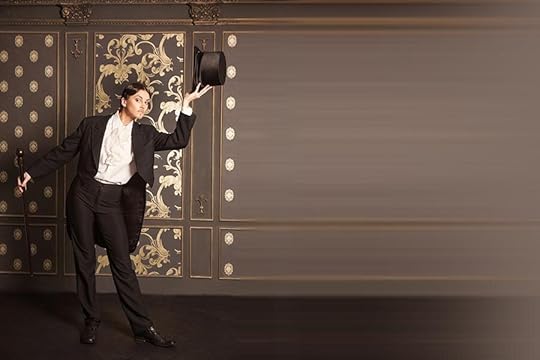 A Finishing School… what is that?
A Finishing School… what is that?In the four books of The Resistance Girl Series – In Picardy’s Fields, The Diamond Courier, The Parisian Spy and The Norwegian Assassin – the main female characters all go to Le Manoir, a finishing school on Lake Geneva in Switzerland.
Nowadays the whole concept of sending girls to a finishing schools to learn how to snap up a rich and important husband, seems sexist and out of date. If women need such skills as social courtesy, upper-class manners and knowledge of cultural traditions it would be to prepare them for their own future positions in society not to give extra shine to their husband’s career.
But beware.
In the United States, Australia and even Switzerland finishing school – or Charms Schools, Etiquette School or Grooming Schools as they are also known, are popping up again, but both the curriculum and the only-for-females have changed.
The name ‘Finishing School’, the gender and the aim may have changed but learning how to behave in the best circles is till favored by etiquette lovers and valued in high-profile professions.

Lake Geneva
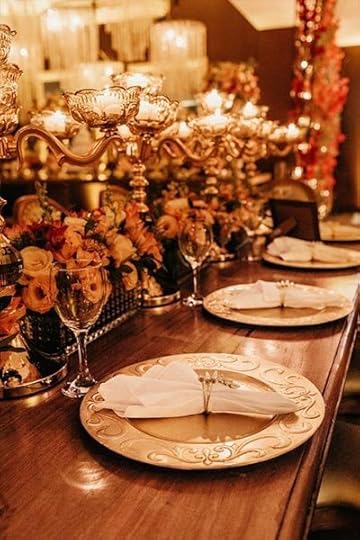
History
The first Finishing Schools date from the late 1800s, resulting from the needs of the high-class social life at that time. Boys went to boarding school to learn French, Latin, and German and girls went to finishing school. The boarding schools aimed at turning young males into gentlemen and prepare them to take over the family business. Girls had no such careers and were primarily taught etiquette, manners, how to manage the household, and some languages, art and music.
Though the boarding school age for boys varied, the girls attended finishing school from the age of 13 until their (early) marriage. In the course of the 19th century, the curriculum changed to generally one-year courses following a secondary education or high school.
Switzerland has traditionally been a favorite country to establish a finishing school because of its location and scenery, lifestyle, political stability, and multilingualism. Girls from all over the world would come there to be prepared for their future.
The two most famous finishing schools that held up Switzerland’s reputation as being ‘the place to be’ were Brilliantmont, founded in 1882, now an international secondary school, and Château Mont-Choisi, which closed in 1995/96. Both were located in Lausanne.
In The Resistance Girl Series I’ve chosen for Le Manoir, also in Lausanne. It had a private beach and students were taken skiing in St Moritz. But I could find very little information about this school and no photos. Apparently, it is now the world headquarters of the multinational food-packaging company Tetra Pak but that looks nothing like the original posh school building. I’ve used this old photo for inspiration.
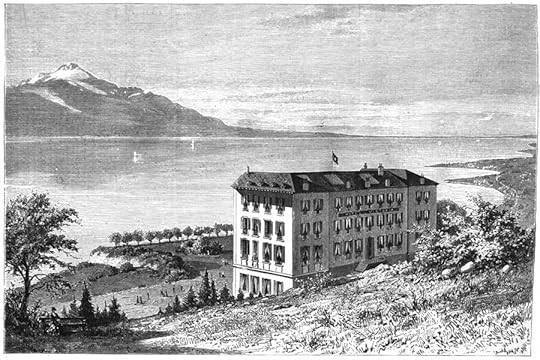
Idea for Le Manoir
With the rise of feminism in the second half of the 20th century and a call for gender equality, the finishing schools were quickly becoming extinct but they’ve seen a rebirth since the 1990s. They rebranded to high-quality cultural and social institutions.
Today Institut Villa Pierrefeu is the only finishing school left in Switzerland. Males can nowadays also apply to these etiquette schools to learn how to wait on guests, table manners and service, skills on house management, and how to address people adequately. It goes without saying, that such courses come with a huge price tag. It could easily amount to $30,000.
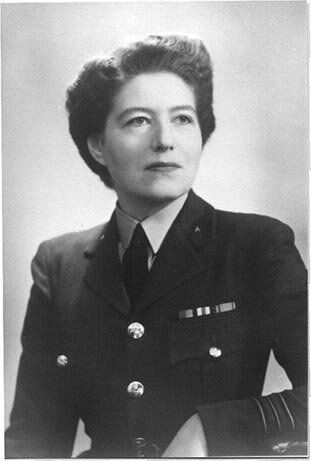
Famous attendants
Le Manoir: British spy Vera Atkins
Institut Alpin Videmanette: Diana, Princess of Wales
Mont Fertile: Camilla, Duchess of Cornwall
Château Mont-Choisi: Carla Bruni-Sarkozy
Vera Atkins
Finishing schools
In the four books of The Resistance Girl Series – In Picardy’s Fields, The Diamond Courier, The Parisian Spy and The Norwegian Assassin – the main female characters all go to Le Manoir, a finishing school on Lake Geneva in Switzerland.
Nowadays the whole concept of sending girls to a finishing schools to learn how to snap up a rich and important husband, seems sexist and out of date. If women need such skills as social courtesy, upper-class manners and knowledge of cultural traditions it would be to prepare them for their own future positions in society not to give extra shine to their husband’s career.
But beware.
In the United States, Australia and even Switzerland finishing school – or Charms Schools, Etiquette School or Grooming Schools as they are also known, are popping up again, but both the curriculum and the only-for-females have changed.
The name ‘Finishing School’, the gender and the aim may have changed but learning how to behave in the best circles is till favored by etiquette lovers and valued in high-profile professions.

Lake Geneva
History
The first Finishing Schools date from the late 1800s, resulting from the needs of the high-class social life at that time. Boys went to boarding school to learn French, Latin, and German and girls went to finishing school. The boarding schools aimed at turning young males into gentlemen and prepare them to take over the family business. Girls had no such careers and were primarily taught etiquette, manners, how to manage the household, and some languages, art and music.
Though the boarding school age for boys varied, the girls attended finishing school from the age of 13 until their (early) marriage. In the course of the 19th century the curriculum changed to generally one-year courses following a secondary education or high school.
Switzerland has traditionally been a favorite country to establish a finishing school because of its location and scenery, lifestyle, political stability, and multilingualism. Girls from all over the world would come there to be prepared for their future.
The two most famous finishing schools that held up Switzerland’s reputation as being ‘the place to be’ were Brilliantmont, founded in 1882, now an international secondary school, and Château Mont-Choisi, which closed in 1995/96. Both were located in Lausanne.

In The Resistance Girl Series I’ve chosen for Le Manoir, also in Lausanne. It had a private beach and students were taken skiing in St Moritz. But I could find very little information about this school and no photos. Apparently, it is now the world headquarters of the multinational food-packaging company Tetra Pak but that looks nothing like the original posh school building. I’ve used this old photo for inspiration.

Idea for Le Manoir
With the rise of feminism in the second half of the 20th century and a call for gender equality, the finishing schools were quickly becoming extinct but they’ve seen a rebirth since the 1990s. They rebranded to high-quality cultural and social institutions.
Today Institut Villa Pierrefeu is the only finishing school left in Switzerland. Males can nowadays also apply to these etiquette schools to learn how to wait on guests, table manners and service, skills on house management, and how to address people adequately. It goes without saying, that such courses come with a huge price tag. It could easily amount to $30,000.
Famous attendants
Le Manoir: British spy Vera Atkins
Institut Alpin Videmanette: Diana, Princess of Wales
Mont Fertile: Camilla, Duchess of Cornwall
Château Mont-Choisi: Carla Bruni-Sarkozy
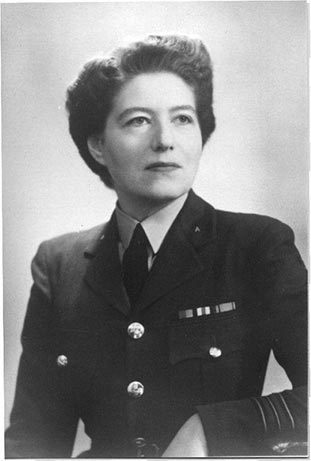
Vera Atkins



